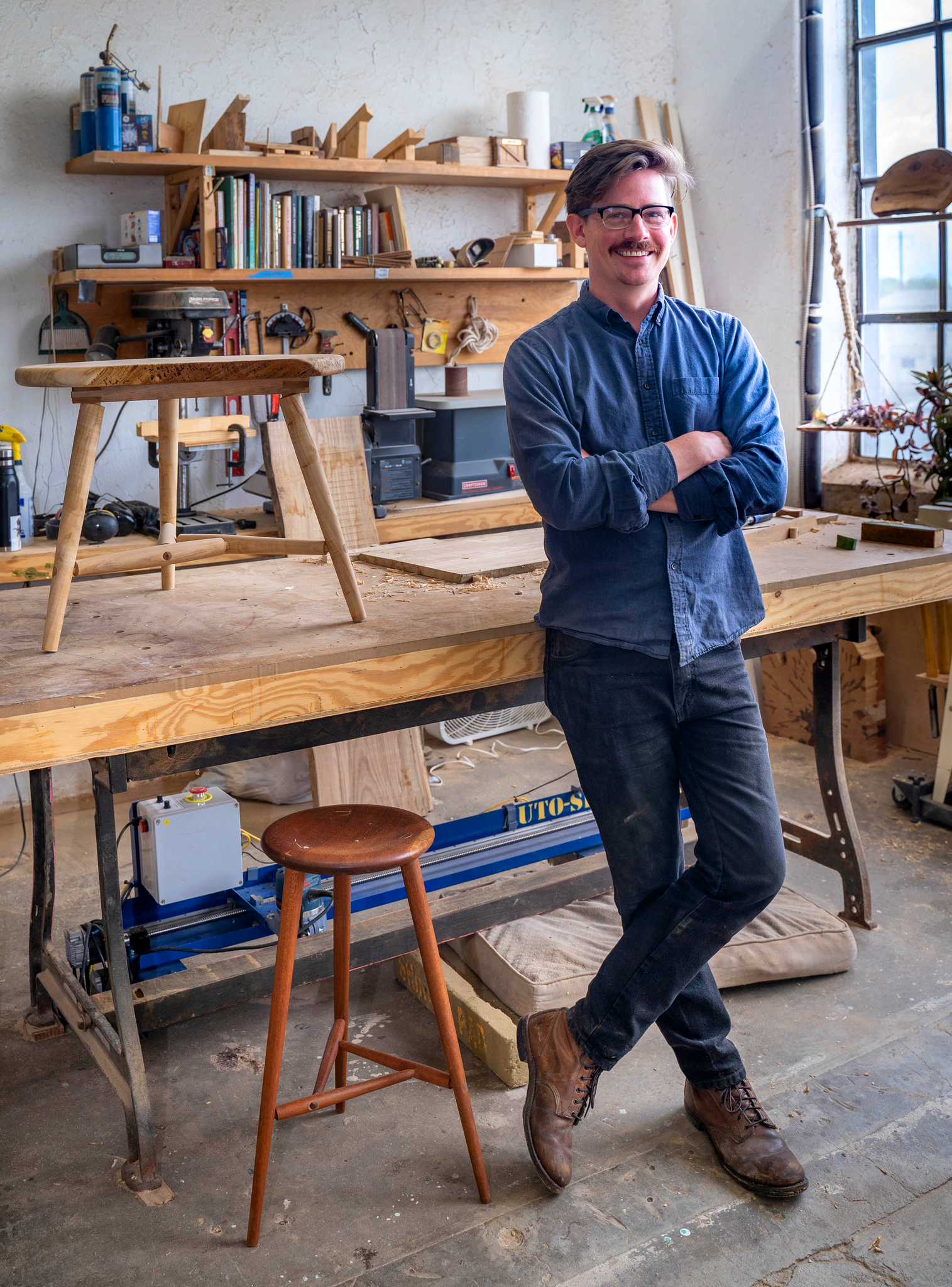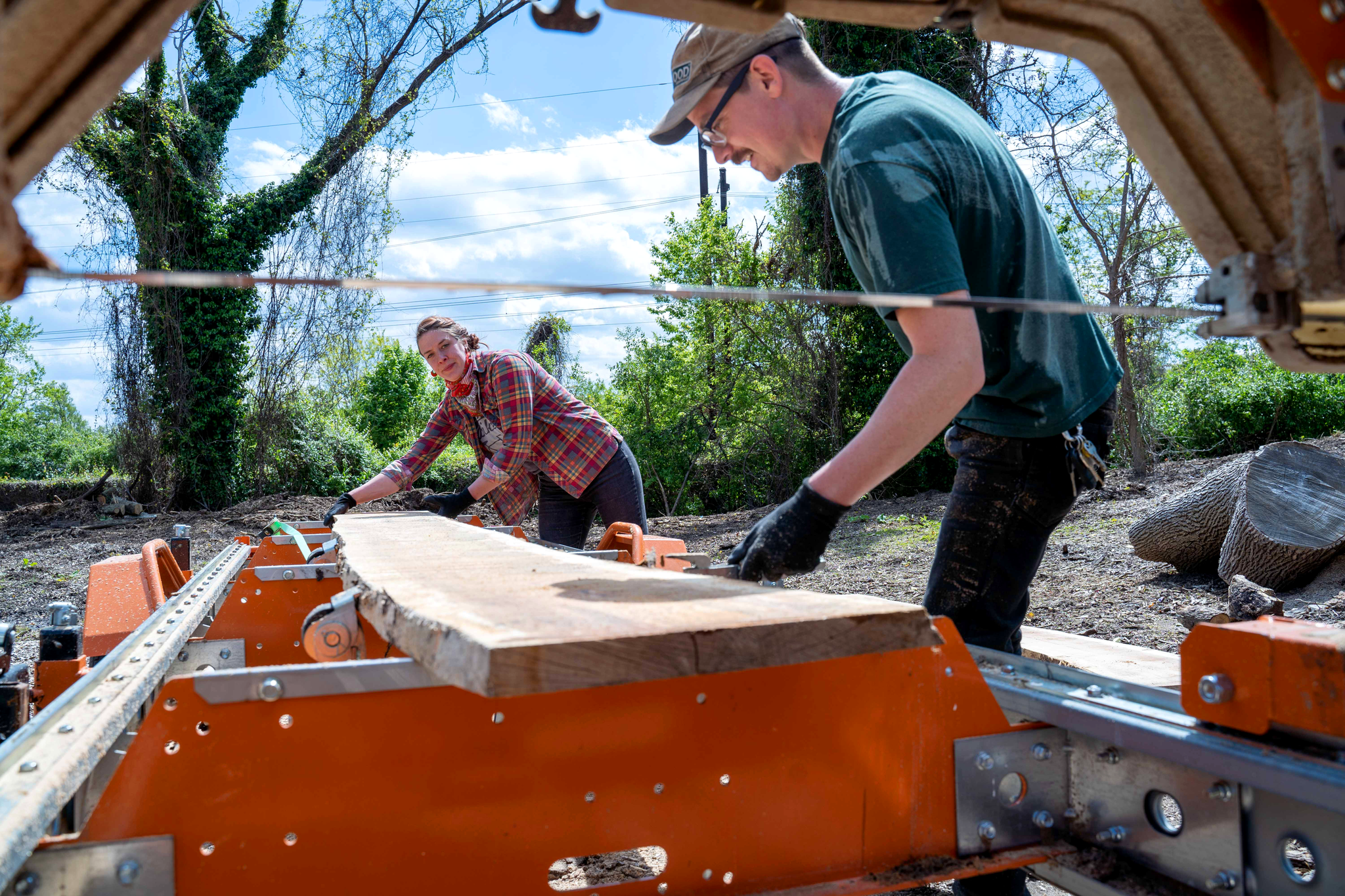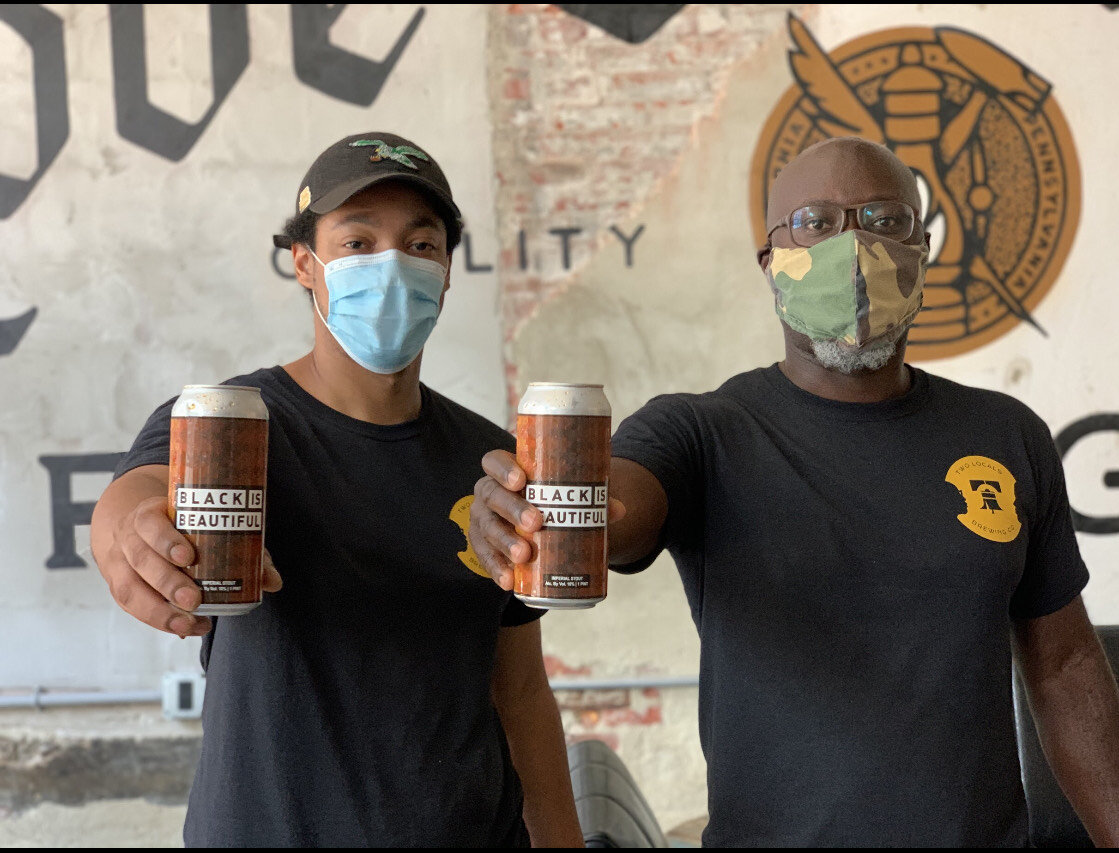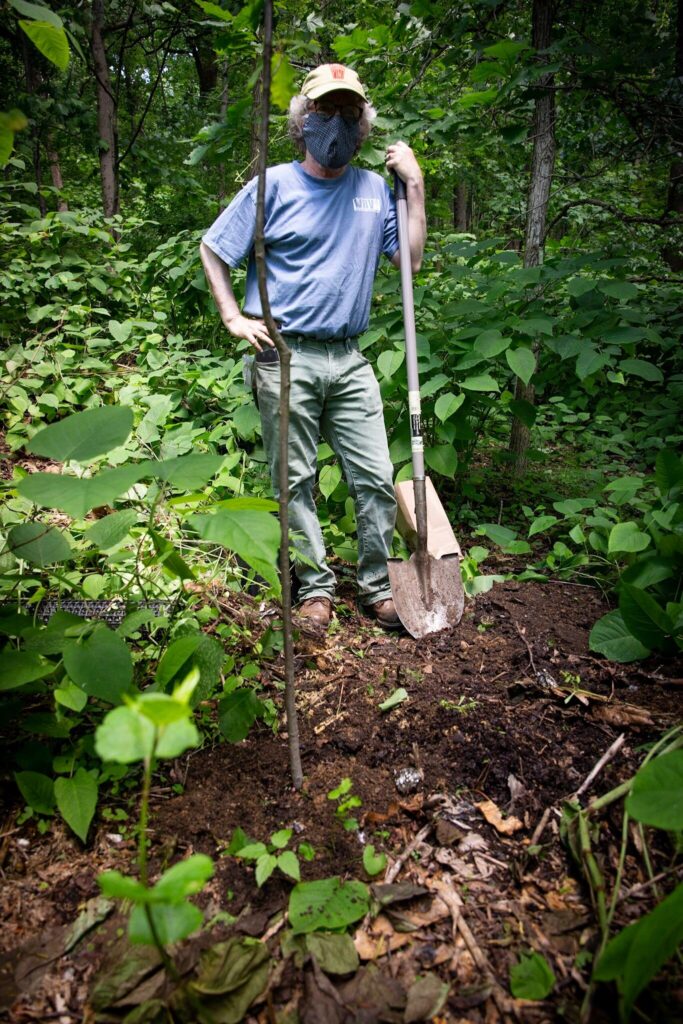Photography by Milton Lindsay
Cutting Edge
By Siobhan Gleason
When Greg Fuguet looks at a piece of storm-damaged lumber, he can already picture what shape it will take in its next life as a piece of art.
After years of woodworking, Fuguet has developed his observational skills. He can determine how a tree will need to be milled as well as how it will be displayed all before he breaks out the band sawmill.
But what is underneath the bark of a fallen tree is not obvious to the untrained eye.
All wood is not created equal. Tree species, age and level of damage are variables that put restrictions on what a piece of lumber can become. Since founding Fuugs Woodworking in 2016 with his business and life partner Kristen Snow, Fuguet has learned how to collaborate with trees to determine their best uses after their lives come to an end.
Unlike some woodworkers, Fuguet only works with fallen and damaged trees. In doing so, he sequesters carbon from re-entering the atmosphere.
When trees are chopped down, the carbon stored inside them is released into the atmosphere as carbon dioxide. According to the Rainforest Trust, tropical deforestation accounts for 15 percent of global carbon emissions each year. While this statistic may seem low, it is equivalent to the amount of carbon released by all transportation on Earth.
Fuguet combats this problem by making long-lasting pieces from trees that have come to the natural ends of their lives.
“In a market where planned obsolescence is the name of the game, that plan is not in harmony with our local watershed. Making durable things from our local ecology puts us more in harmony with the watershed,” Fuguet says.
Finding fallen trees, however, proved to be a challenge early on. Fuguet bought salvaged lumber, found trees through friends and occasionally reached out to strangers.
“If I drove by and saw a fallen tree, I would contact the property owner and see if they were interested in getting rid of it,” Fuguet says.
This method of acquiring lumber was not ideal. Fuguet needed a more reliable and convenient source of wood. He found it at Awbury Arboretum, a 55-acre botanical garden open to the public in Germantown. In 2017, Fuguet reached out arboretum landscape manager Karen Flick. He milled his first log at Awbury that same year and became an official partner with them in 2019. Fuguet mills his logs in the Agricultural Village section of the arboretum.
“The majority of the property is a preserved historic landscape. We maintain it based on how it was originally designed. A portion of the property is the Agricultural Village. This is a space where we have several partner organizations, companies and individuals who use it for various types of agriculture,” Flick says.
Awbury Arboretum has roughly 3,000 trees and is home to an aging population of paper birches, black gums and ashes.
Part of Flick’s job includes adhering to Awbury’s stewardship plan. The
stewardship plan identifies the top 10 projects that will be completed at the arboretum in the coming years. One of these projects is tree maintenance and care.
Teams of arboretum workers have been tracking the health of each tree species on the property since 2012 using GPS and geographic information system (GIS) technology.
“We are working on getting the GIS data up and running so that it is more user friendly for our in-house landscape maintenance,” Flick says. Her goal is “having the GIS work done so that I can click on a tree, check if it’s deceased and add it to my list for removal.”
This data helps Flick identify which trees are hazardous and must be removed from the land. She has identified 10 trees that need to be removed in 2020 alone.
Removing dead trees from Awbury used to be a challenge before the partnership with Fuguet was formed. “In many parts of the land we were just leaving the logs, so it’s really helping to clean up the landscape,” Flick says. “Taking it to a lumber mill, we’d have to pay—and while we still do that for larger logs, it’s travel time, it’s expensive. These logs weigh thousands of pounds. So it makes it a little more doable to have him right there.”
Fuguet has also benefited by learning from Flick.
“Karen has helped teach me a lot about how the tree grows and responds to stimuli in the environment,” Fuguet says. These lessons “inform my process as a furniture maker,” he says.
Fuguet brings his own milling equipment to the arboretum, which he has upgraded over time. Early on, he used a chainsaw to mill, which was inefficient. He now uses a band sawmill and tinkers with his tools to make working with heavy logs easier. Fuguet also emphasizes the environmental impact of his work through social media. The local ecology of the arboretum is always in flux, and environmental changes affect what wood Fuguet uses.
The emerald ash borer, native to Northeastern Asia, has been decimating ash trees in Southeastern Pennsylvania. Dying ash trees are becoming one of Fuguet’s main sources of lumber. Though these trees are edging toward extinction, Fuguet has been able to preserve them as art. They are becoming a piece of history.
Flick describes Fuguet’s work as a form of preservation that can be shared. “We think if a tree dies it’s gone, but it’s really not,” she says. “How cool is that to continue it on in a piece of furniture and pass it down in a family?”
Fuguet embraces the natural shape of wood, including cracks, holes and jagged edges. He often uses a bow-tie inlay to stabilize a crack in a piece of wood. The inlay stops a crack from deepening further and warping the wood.
Fuguet often uses black walnut for his bow ties to add visual interest without drastically changing the natural shape the tree took. Fuguet’s use of the bow tie was inspired by George Nakashima, a leading innovator of 20th-century furniture design.
“I like to look at other woodworkers who have been doing this for a long time and learn and respond to their pieces of history,” he says.
Fuguet’s unique, sustainable designs interested Natalie Jesionka, who discovered Fuguet’s work through local makers in Fishtown and followed him on Instagram. Jesionka commissioned Fuguet to design two shelves in her home. Her shelves are decorated with bow ties made from black walnut and ambrosia beetle trails.
“I shared my vision,” she says. “I wanted the piece to feel alive. There is so much vibrancy in Greg’s work.” Jesionka now uses one shelf for her speakers and the other for her international cookbook collection.
Fuguet plans to continue his work as best he can in this uncertain time. Fuugs now has a Patreon account, which lets customers show their support by giving monthly to Fuugs in exchange for a few wooden gifts, such as bowls and candlesticks. This support can help Fuugs stay afloat during COVID-19. For now, Fuguet is continuing to share his work on his Instagram page @FuugsWoodworking, where he also displays the techniques he uses in demonstration videos.
According to Fuguet, the videos are quite popular.
“It’s uncommon to see a tree turn into a table,” he says. “I think that is why people are mesmerized by it.”










